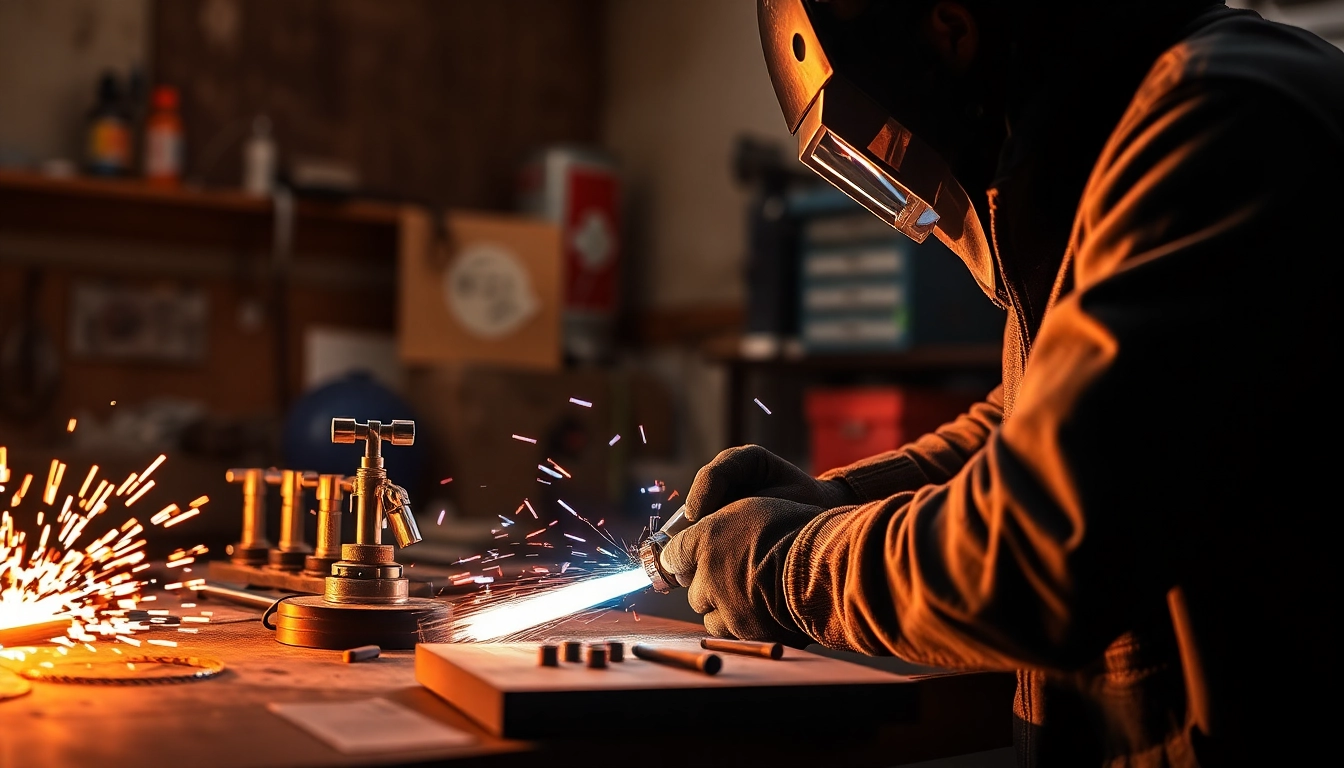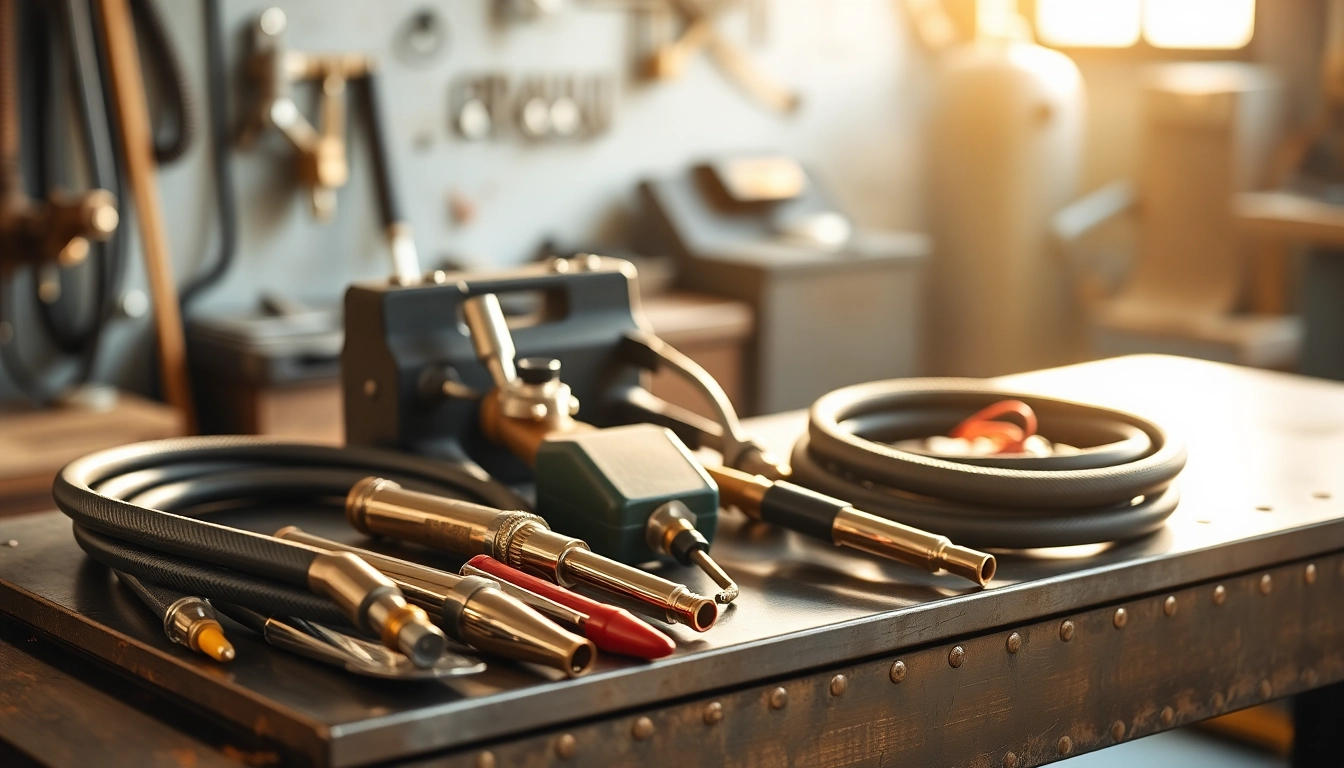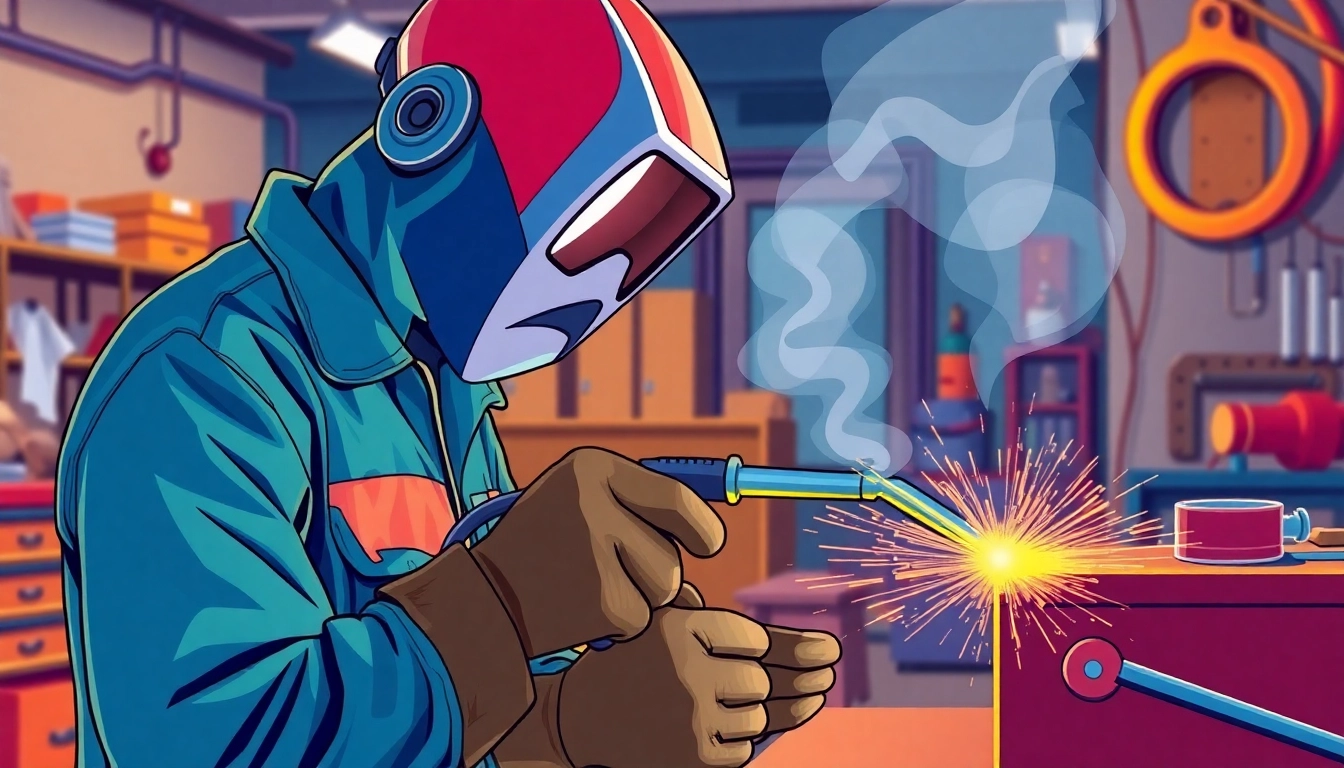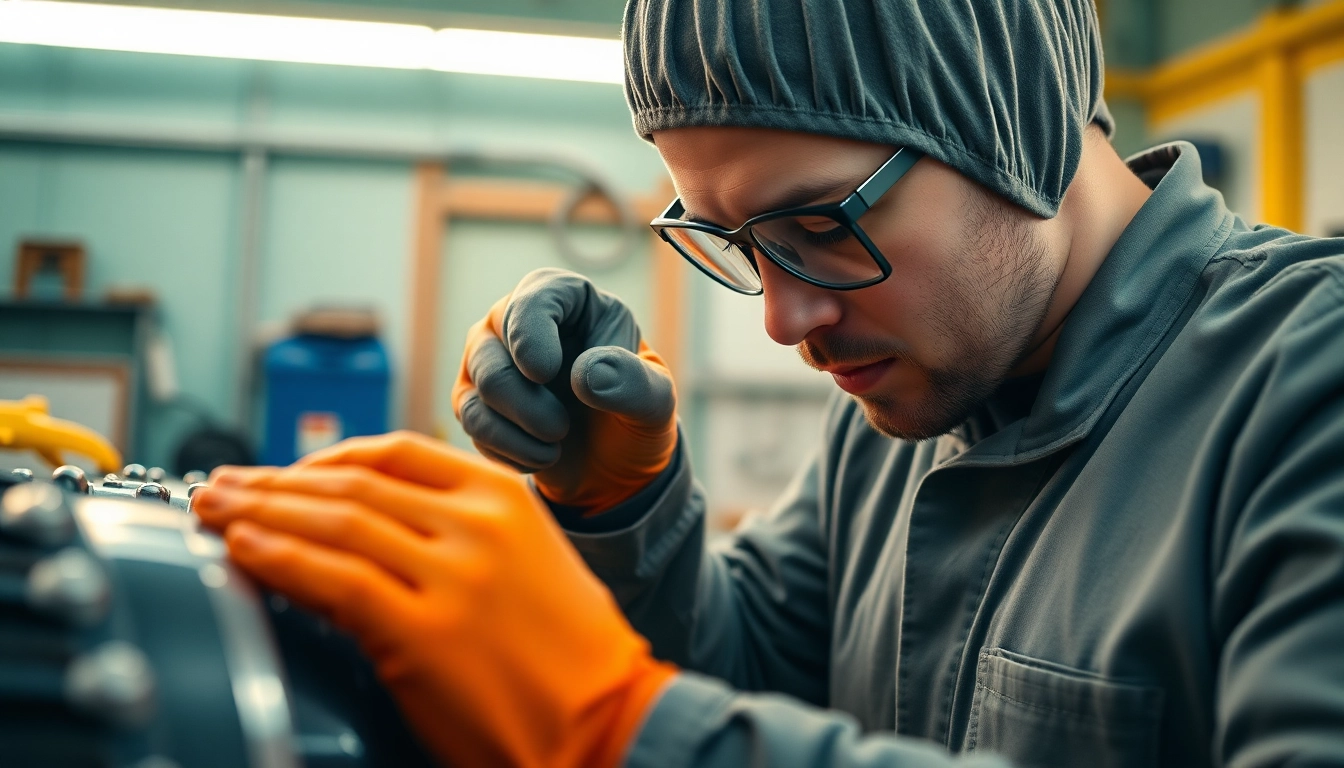Understanding the Oxy Gas Welding Kit
What is an Oxy Gas Welding Kit?
An oxy gas welding kit is an essential tool for any welder, combining oxygen and acetylene gases to create a high-temperature flame ideal for welding and cutting metals. This process, known as oxy-fuel welding, uses the combustion of oxygen and acetylene, producing a flame that can reach temperatures of around 3,200°C (approximately 5,792°F). Oxy gas welding kits are used in a variety of applications, from metal fabrication to repair work, and are noted for their effectiveness in situations where precise control over the weld is required.
Oxy gas welding is particularly advantageous for welding ferrous and non-ferrous metals, including steel and aluminum. Its versatility makes it a preferred choice among both professional welders and DIY enthusiasts. When selecting an oxy gas welding kit, understanding the components and capabilities of the kit is crucial to achieving optimal results.
Key Components of the Kit
An oxy gas welding kit typically consists of several key components, each playing a vital role in the welding process:
- Gas Cylinders: The two primary gas cylinders contain oxygen and acetylene gases. Oxygen is essential for combustion, while acetylene acts as the fuel.
- Welding Torch: This is the handheld device that mixes the two gases and delivers the flame. It is equipped with valves for adjusting the gas flow and a nozzle that determines the flame size and type.
- Regulators: These devices control the pressure of the gases coming out of the cylinders. Each gas has its own regulator to ensure safety and accuracy in the welding process.
- Hoses: Flexible hoses transport the gases from the cylinders to the torch. They are typically color-coded, with red for acetylene and green for oxygen.
- Welding Goggles/Face Shield: Essential for protecting the eyes from bright light and harmful UV radiation produced during welding.
- Welding Rods: Depending on the type of metal being welded, appropriate filler rods or wire may also be included in the kit.
Advantages of Using Oxy Gas for Welding
The oxy gas welding technique boasts several advantages that make it appealing for various applications:
- Portability: Most kits are lightweight and can be easily transported, allowing for versatile use in different locations.
- Cost-Effectiveness: Compared to other welding methods, oxy gas welding is generally less expensive in terms of equipment and operational costs.
- Ease of Use: With proper training, even beginners can learn to use oxy gas welding kits effectively, making it accessible for both professionals and hobbyists.
- Versatility: Oxy gas welding can be used for various welding tasks, including fabrication, repairs, and even specific artistic endeavors.
- High Heat: The ability to reach higher temperatures enables welders to join thicker materials and provides more effective cutting capabilities.
Essential Features to Look for in an Oxy Gas Welding Kit
Quality of Components and Durability
When selecting an oxy gas welding kit, the quality of components is paramount. Durable materials ensure that the kit can withstand the rigors of frequent use, especially under high heat and pressure situations. Look for kits that feature:
- Robust Gas Cylinders: Ensure the cylinders are constructed from high-quality steel or aluminum, designed to resist corrosion and withstand pressure.
- High-Grade Hoses: Opt for hoses that are both heat and flame-resistant, with certifications for safety (such as ISO standards).
- Reliable Regulators: Check for regulators that provide precise control over gas pressure, featuring clear gauges for easy reading.
- Sturdy Welding Torches: Look for torches made from high-quality materials that can handle intense temperatures and avoid becoming brittle over time.
Safety Features and Precautions
Safety is a critical consideration in any welding operation. An appropriate oxy gas welding kit should come equipped with essential safety features:
- Flashback Arrestors: These devices prevent flames from traveling back into the hoses and cylinders, significantly reducing fire risks.
- Check Valves: Vital for stopping gas from flowing back into the cylinders, avoiding potential combustion hazards.
- Protective Gear: Ensure the kit includes or recommends the necessary safety gear, training on the use of goggles and flame-resistant clothing.
- Manual and Instructions: A comprehensive manual detailing setup, usage, and maintenance is essential for safe operation.
Compatibility with Various Projects
Not all oxy gas welding kits are equally suited for every project. Therefore, consider the compatibility of the kit with the types of metals and thicknesses you’ll be working on:
- Metal Types: Ensure the kit can handle the specific metals used in your projects, including steel, aluminum, and copper.
- Weld Thickness: Check that the torch’s capacity fits the thickness of materials you intend to weld; some kits include adjustable nozzles for greater versatility.
- Additional Attachments: Some kits come with attachments for specific tasks, such as brazing tips for joining dissimilar metals or cutting tips for fabrication work.
Comparing Oxy Gas Welding Kits: Brands and Models
Review of Popular Oxy Gas Welding Kits
When evaluating different oxy gas welding kits, it’s important to compare popular models to find the best fit for your needs. Some well-known brands include:
- Victor: Known for their high-quality regulators and durable torches, Victor kits are favored by professionals for heavy-duty applications.
- Harris: Offers a range of reliable kits suitable for both hobbyists and professionals, with good gas flow control and some models including handy extras.
- Lincoln Electric: This brand provides reliable kits with an emphasis on safety and performance, often including more robust features for industrial use.
Price Points and Budget Options
The price of oxy gas welding kits can vary significantly based on brand, features, and included components. Budget-friendly options start around $100, while professional-grade kits can exceed $1,000. Here’s a breakdown of typical price points:
- Entry-Level Kits: $100 – $300. Ideal for beginners or light-duty work.
- Mid-Range Kits: $300 – $600. Suitable for home users and semi-professionals.
- Professional Kits: Over $600. Best for experienced welders or those who require high-performance tools for rigorous applications.
User Reviews and Recommendations
Reading user reviews helps gauge the reliability and performance of different kits. Platforms like Amazon and specialized welding supply sites often host extensive user feedback, focusing on aspects like ease of use, build quality, and customer service experiences. Look for kits with:
- High overall ratings (4 stars and above).
- Positive feedback on customer support and replacement parts availability.
- Comments on versatility and performance across different materials.
Common Applications for Oxy Gas Welding Kits
Repairing Metal Equipment and Structures
Oxy gas welding is frequently used for repairing metal equipment and structures in various industries. Its ability to provide a strong, localized heat source makes it perfect for:
- Pipe Repairs: Ideal for fixing leaks and restoring integrity in piping systems, particularly in plumbing and industrial environments.
- Heavy Machinery Repairs: Commonly employed in the repair of construction and agricultural equipment, oxy gas welding can handle repairs on thick, durable steel components.
- Structural Repairs: Useful for fixing deteriorating metal structures like bridges and buildings, where precise welds are crucial to maintaining safety and effectiveness.
Creating Art and Sculptural Projects
Beyond industrial uses, oxy gas welding is popular among artists and craftspeople for creating metal sculptures and art pieces:
- Metal Sculptures: Artists use heating techniques to manipulate and join various metals, allowing for innovative design and form.
- Metal Furniture: Fabricators often integrate oxy gas welding in the creation of custom metal furniture and décor, combining functionality with artistic expression.
- Sculptural Installations: Artists appreciate the versatility and fine control of flame regarding intricate metalwork in installations.
Home Improvement and DIY Enthusiast Uses
For DIY enthusiasts, an oxy gas welding kit is a valuable investment for various home improvement projects, such as:
- Fabricating Metal Furniture: Create custom tables and chairs by welding metal parts together.
- Home Repairs: Fix broken metal components around the house, including railings, gates, and furniture.
- Automotive Projects: Car restoration and custom modifications can benefit from the precision and control offered by oxy gas welding.
Maintenance Tips for Your Oxy Gas Welding Kit
Best Practices for Storing Your Kit
Proper storage of your oxy gas welding kit is vital for maintaining its functionality and ensuring safety:
- Store in a Cool, Dry Place: Keep the kit in a cool, dry area away from direct sunlight and moisture to prevent gas deterioration and corrosion.
- Secure Cylinders: Always secure gas cylinders in an upright position using clamps or racks, and avoid storing them in close proximity to combustible materials.
- Keep Hoses Untangled: Store hoses so they do not undergo undue wear or kinking, which could impair gas flow.
Regular Checks and Maintenance Routines
In addition to proper storage, regular maintenance is necessary to keep your kit in top condition:
- Inspect Tanks and Regulators: Check for signs of corrosion, leaks, or damage. Use a soap solution to detect leaks by applying it to tank and regulator connections.
- Replace Worn Parts: Regularly review hoses, fittings, and other components for signs of wear and replace them as required.
- Calibrate Pressure Regulators: Ensure your regulators are functioning correctly and accurately displaying gas pressure levels.
Upgrading Components for Optimal Performance
As you gain experience, consider upgrading certain components within your oxy gas welding kit to enhance performance:
- Better Nozzles: Upgrading to higher-quality or more specialized nozzles can vastly improve your welding capabilities.
- Advanced Regulators: Investing in high-pressure or digital regulators can provide more precise control over gas flow.
- High-Quality Hoses: Consider replacing standard hoses with those designed for high heat and less expansion to improve safety and efficiency.









Leave a Reply